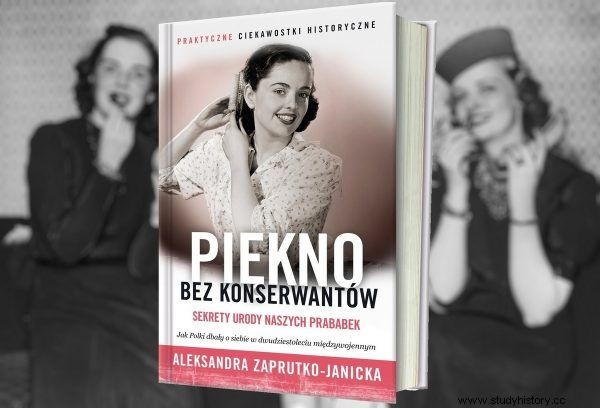Beauty is the truest combat sport, and the First World War brought this fight to a whole new level. Paradoxically, it was the thousands of massacres and the disfigured faces of their victims that allowed for the birth of modern plastic surgery.
Neither side of the First World War held back. Newer and newer conventional and chemical weapons were used on the battlefields. Young people were returning from the front, devoid of limbs, with burnt skin, faces massacred by shrapnel, with torn off noses, ears ... Until recently, they combed their hair cheekily and picked up girls in their towns. Now they themselves did not recognize their reflection.
The First World War turned out to be the midwife of a whole new branch of medicine. Modern plastic surgery. In turn, the faces of the unfortunate soldiers became testing grounds for adepts of dangerous art. As French columnist Michèle Fitoussi explained:
Soldiers wounded in the face were transplanted by surgeons - in order to restore their proper appearance - in case of burns, they replaced defects in facial bones with bones from the hip or limbs.

Walter Yoe - British sailor wounded during the First World War. It was there, for the first time in history, that the skin transplantation procedure on the face was performed. Today it is difficult to consider such a procedure as successful (source:public domain).
Experienced doctors in military hospitals worked wonders, turning butchered pieces of meat back into human faces. The war, however, was finally over. It left behind outstanding specialists, most of whom had nowhere to use their master skills.
That's when business people who professionally beautify started asking for their knowledge… and those who dreamed of being beautified by someone. Among the representatives of the second group were members of the social cream driven by vanity, aristocrats, aging celebrities, but also victims of accidents or people suffering from deformities.
Sorceress with a scalpel
The first female plastic surgeon was Suzanne Noël. This French doctor has dedicated herself to improving the human body. First, she helped wounded soldiers during the war. Then she started aesthetic surgery. She operated on noses, breasts and chins. She also performed facelifts, abdominal reconstruction and other beauty treatments.
In 1926 she even wrote a book that was one of the first textbooks on aesthetic surgery. She not only lectured on the rules of art, but also emphasized its sociological and psychological influence. In addition to practicing medicine, Suzanne Noël was also an outspoken feminist.
In the age of plastic surgery today, which sets unattainable standards of beauty, it is difficult to comprehend a similar combination. An advocate of equality who cuts women determined to adapt their body to the standards of society, instead of loving it as it is?
Well, the doctor had her own view of the matter. She was firmly convinced that her specialization would play a key role in the emancipation of women. Kathy Davies, a researcher from Amsterdam, in her article on Suzanne Noël describes how her dedication to plastic surgery began.

"Such Nosy Koryzujemy" - an advertisement for a plastic surgery clinic in the magazine "Światowid" in 1929 (source:public domain).
A woman who, due to her age, could no longer earn a living, came to the doctor. Noël performed one of her first facelifts on it. The operation turned out to be so successful that after the recovery, the patient immediately found a new job. There were more cases like this.
Years later, an opera singer began to seek help from Dr. Noël. Despite her fame and angelic voice through her wrinkled face, she no longer received engagements. She wasn't even allowed to sing for free for veterans in hospitals! Finally, there was also a sixty-year-old luxury goods store manager who lost her job because she just… looked old.
In a pioneering book on surgery, Noël emphasized that all these women were able to recover from a difficult situation by an appropriate operation. The patients rejuvenated, regained their self-confidence and managed to earn a livelihood, which was the best reward for the doctor herself.

Suzanne Noël, a pioneer in plastic surgery, during surgery in 1920 (source:public domain).
When did our grandmothers start correcting their noses?
Plastic surgery on the Vistula River was also doing well. It started in earnest with Professor Ludwik Rydygier, who was considered one of the best surgeons in the world at the turn of the 19th and 20th centuries. Although he himself did not practice repairing defects on a daily basis, he developed and described several methods that are still used today!
Rydygier gathered young and talented doctors around him, whom he educated and encouraged to develop their skills. His deputy, Antoni Gabryszewski, specialized mainly in orthopedics and even ran his own practice in this field in Lviv. In addition, he published scientific works and performed plastic surgery procedures.
Among the topics he developed, there was also a textbook for adepts of this emerging specialization ("On beautifying operations", 1896). It is, among others, due to his efforts, as well as the efforts of other pioneers on the Vistula River, that plastic surgery not only appeared in Poland as a specialty, but also became easily accessible. Provided that you have the appropriate resources, of course.

Ludwik Rydygier, active at the turn of the 19th and 20th centuries, was considered one of the most outstanding surgeons in the world. Professor Ludwik Rydygier with his assistants on the canvas of Leon Wyczółkowski, 1897 (source:public domain).
Were it not for these doctors, the Polish press would never have published an advertisement for Dr. Michałek-Grodzki, who carried out "Cosmetic surgeries of the face, nose, ears, bust, etc. at Złota Street 3 in Warsaw." He wasn't the only one. A whole new industry was born!
In 1937, the well-known Warsaw beautician Hanna Micewiczówna explained in the pages of the "Świat Piękna Pani" magazine that there was nothing wrong with plastic surgery. The journalist listed her basic tasks, which included removing and repairing "what nature, disease, accidents, age and life have destroyed".
In the same article, she stated that in the struggle for existence in the difficult times of emancipation and unemployment, qualifications alone were not enough. Competent people with a good external appearance will win. Even if obtained artificially.

Thanks to the book by Ola Zaprutko-Janicka entitled "Beauty without preservatives" you will learn the beauty secrets of our great-grandmothers. Buy now with a discount on empik.com.
However, the quest for a new bust did not always end happily for the woman. One of the particularly macabre cases from the mid-1930s is the story of Aleksandra Ufnowska, an engineer. She, on the other hand, wanted to reduce her breasts, claiming that they prevented her from bending down, playing sports or driving. Instead of going to Paris like many other Polish women, she decided to trust someone who was going to reduce embarrassing curves ... in her own apartment.
As Stanisław Milewski writes in his "Dark affairs of the interwar period", the operation was to take place at the doctor Feliks Rostkowski. His wife was the assistant. Additionally, Dr. Dionizy Helling was also to be present. We know the course of the whole thing quite precisely for one sad reason - the patient did not survive. Milewski accurately describes the circumstances of the ill-fated surgery:
The prosecutor accused both doctors of culpable recklessness. They did not inform the patient and her husband about the risks associated with the operation, but exaggerated its reliability and harmlessness to health. They were also the wrong people for this type of surgery, they lacked the necessary knowledge and experience.

Another advertisement promoting the same plastic surgeon published in "My Friend" in 1935.
In the years 1934-1935, a trial was conducted before the Warsaw District Court. The prosecutor's office and Ufnowska's husband wanted to punish those responsible for her death, but they failed to get a conviction in either the first or the second instance. The case swept through the capital's boulevard with the force of a hurricane.
Irresponsible medics and women wishing for a perfect figure were rebuked. However, the effect was counterproductive. Instead of discouraging Polish women from embellishing their bodies, journalists only cheered them up. Many of the ladies have only now said that the bust can be enlarged and the nose can be improved. And they were not going to ignore such an opportunity…
Source:
Aleksandra Zaprutko-Janicka's book entitled "Beauty without preservatives. Beauty secrets of our great-grandmothers ” on which the above article was based available at a discount on empik.com.
"Beauty without preservatives" is another book published by our portal. Thanks to it, you will learn the secrets of natural beauty and proven recipes from a century ago. By purchasing it, you will also support our portal and help us in working on future publications!
